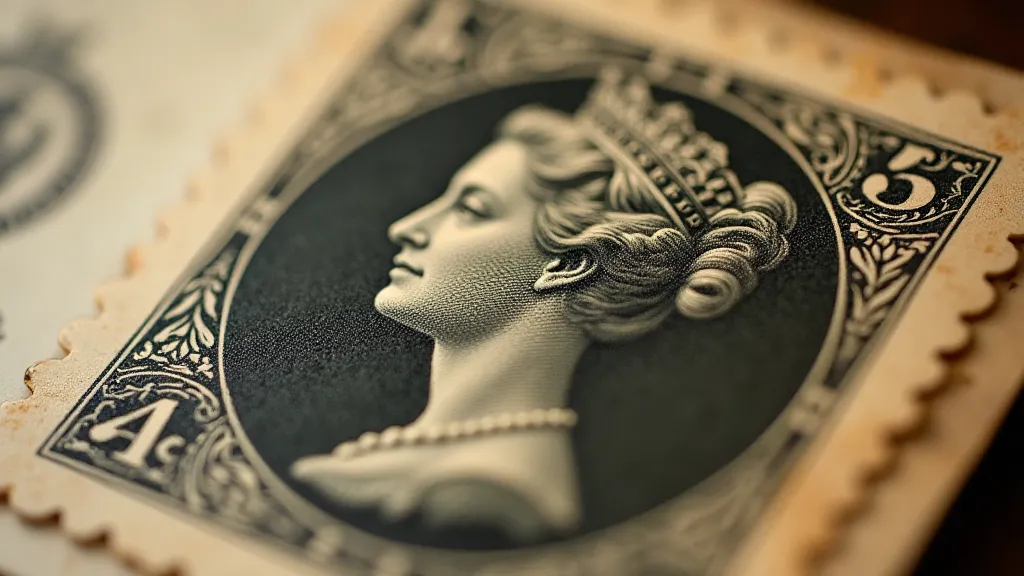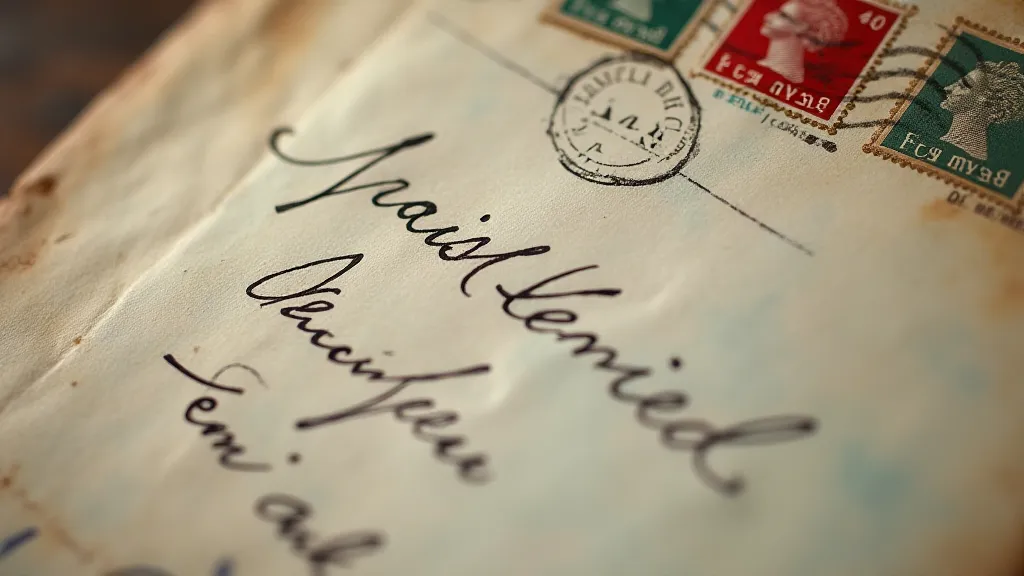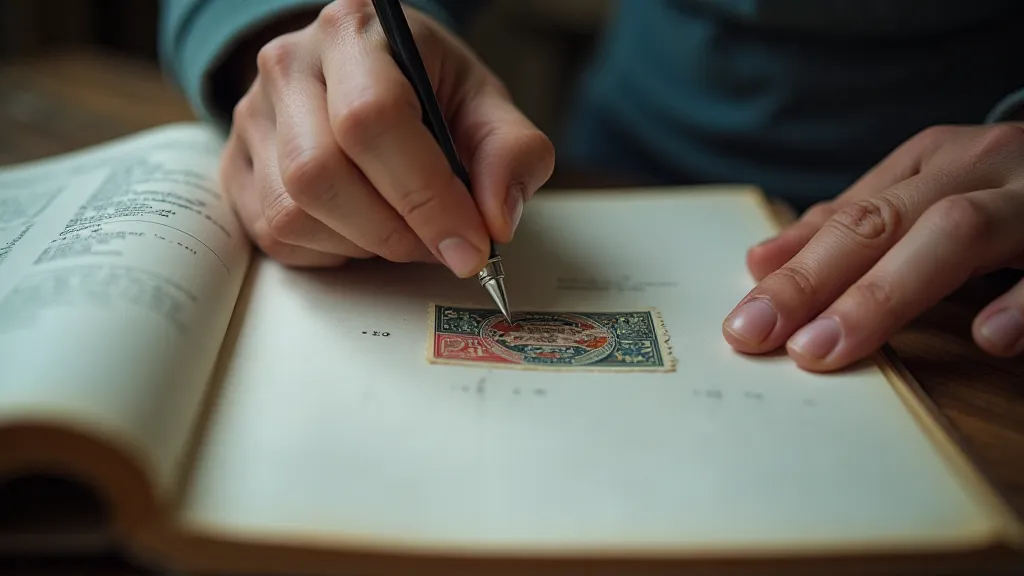The Currency of Connection: How Stamps Facilitated Transatlantic Correspondence
Imagine a world without instant communication. No email, no video calls, no rapid-fire text messages. Just the vast expanse of the Atlantic Ocean separating continents, and a fragile piece of paper carrying hopes, dreams, and news across that distance. This was the reality for centuries, and the humble postage stamp, far more than just a way to pay for delivery, became a tangible symbol of connection, a tiny, colorful ambassador bridging cultures and carrying the weight of personal stories.
The Dawn of Transatlantic Communication and the Penny Black
Prior to the advent of reliable transatlantic steamship service in the mid-19th century, communication across the Atlantic was a slow, expensive, and often precarious affair. Letters relied on sailing vessels, prone to storms and delays that could stretch months. The cost was prohibitive for all but the wealthiest individuals. The British postal system, though well-established, faced challenges in efficiently handling this limited transatlantic correspondence. Then, in 1840, a revolution arrived: the Penny Black, the world's first adhesive postage stamp. Suddenly, the cost of sending a letter significantly decreased, opening up the possibility of regular communication across the ocean for a wider population. While still expensive by today's standards, the impact was transformative. It marked the beginning of a new era of transatlantic interaction.
Early transatlantic correspondence, facilitated by these new stamps, often carried profound meaning. Letters from emigrants to family back home, news of burgeoning businesses, academic exchanges – all traveled encased within the paper rectangle bearing a portrait of Queen Victoria. The stamps themselves became miniature works of art, reflecting the aesthetic sensibilities of the era, and providing a unique glimpse into the cultural landscape of Victorian England.

The Emigrant's Promise: Letters Home
The mid-19th century witnessed a massive wave of emigration from Europe, particularly from Ireland, Germany, and Scandinavia, to the United States and Canada. These individuals often faced unimaginable hardships, leaving behind families and familiar surroundings in search of a better life. The letters they sent back were often the only link to their loved ones, conveying news of their struggles, hopes for success, and the longing for home. These weren’t mere formalities; they were lifelines.
Imagine the anticipation felt by a family in rural Ireland awaiting a letter from their son who had sailed to America. The journey alone could have taken weeks or even months. The stamp, carefully saved and treasured, served as a physical promise of connection, a small token of hope in a world often shrouded in uncertainty. A single stamp, bearing a foreign emblem, represented the vast distance and the sacrifices made in pursuit of a brighter future. Many of these early transatlantic letters and their accompanying stamps remain, poignant reminders of the human desire for belonging and the enduring power of family ties. The fragility of the paper itself, often watermarked and thin, is a testament to the preciousness of the message it carried.
The Language of Postal Markings: Unlocking Stories
Beyond the stamps themselves, the postal markings – the cancellations, post office markings, and transit marks – provide invaluable clues to the journey of a letter. These markings, applied by postal workers along the way, are a unique language, offering insights into the efficiency (or lack thereof) of the postal system, the various points of transit, and the prevailing conditions of the time. A faded London stamp alongside a New York cancellation, a faded Swiss postmark suggesting a re-routing – each mark tells a silent story, adding layers of complexity and intrigue to the historical record.
Examining these markings reveals not just dates and locations, but also hints about the challenges faced by postal workers and the letters they handled. A smeared cancellation might indicate a rough voyage, a double marking could suggest a lost and re-mailed letter. The study of these markings – a branch of philately known as ‘postal history’ – allows us to reconstruct the journey of a letter, piecing together the narrative of transatlantic correspondence.

Beyond Personal Correspondence: Commercial and Diplomatic Exchange
While personal letters dominated early transatlantic correspondence, stamps also played a vital role in facilitating commercial and diplomatic exchanges. Business correspondence, contracts, and official documents relied on the postal system to bridge the gap between continents. Diplomatic pouches, carrying official communications between governments, were particularly reliant on reliable postage and carefully chosen stamps.
The stamps used for these official communications often reflected the political climate and diplomatic relations between the countries involved. A rare diplomatic pouch stamp, bearing a unique design or inscription, can be a highly sought-after item for collectors, providing a tangible link to significant historical events.
The Art of Preservation: Caring for a Piece of History
Collecting vintage stamps is more than just acquiring objects; it's about preserving history, safeguarding cultural heritage, and connecting with the stories of those who came before us. Proper preservation is crucial to ensure that these fragile pieces of the past survive for future generations.
Stamps should be stored in acid-free albums or stock books, away from direct sunlight, heat, and humidity. Handling stamps with clean, cotton gloves helps prevent damage from fingerprints and oils. Specialized mounting hinges, designed to minimize damage to the gum (the adhesive on the back of the stamp), are essential for securing stamps in albums. Restoring damaged stamps is a delicate process best left to experienced professionals. Attempting to clean or repair a stamp without the proper knowledge can easily cause irreparable harm.

A Tangible Legacy
The humble postage stamp, once a simple means of paying for postal delivery, has evolved into a powerful symbol of transatlantic connection. It represents the hopes and dreams of emigrants, the resilience of families separated by distance, and the ongoing exchange of ideas and cultures that has shaped our world. Collecting vintage stamps is not just a hobby; it’s a journey through history, a tangible link to the past, and a celebration of the enduring power of human connection. Each stamp carries a silent narrative, waiting to be discovered and shared, a miniature window into a world profoundly shaped by the currency of correspondence.





